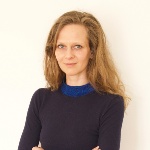Embedded in the extensive programme accompanying the exhibition at the Kunstmuseum Stuttgart, the international conference "Gego. procedencia y encuentro" took place on April 7th and 8th 2022 in cooperation with the curators of the Guggenheim Museum, New York, the MACBA, Barcelona, and the Tate London.
Source: https://wuestenrot-stiftung.de/kulturgueter-in-archiven-und-museen/Project management
- Prof. Dr. Kerstin Thomas
- Dr. Ulrike Groos (Director of the Kunstmuseum Stuttgart)
- Prof. Philip Kurz (Managing director of the Wüstenrot-Stiftung)
academic curator
Stefanie Reisinger M.A.
In cooperation with Prof. Dr. Thomas Ertl, and Dipl.-Inf. Hermann Pflüger from the Institute for Visualization and Interaktive Systems (VIS), University of Stuttgart.
Kooperationspartner
As one of the best-known artists in Latin America, Gego (actually: Gertrud Goldschmidt) became a role model for an entire generation of artists with her filigree, net-like spatial installations of the 1960s, which were inspired by the three-dimensionality in Gego's work in their search to overcome the two-dimensional pictorial space. From 1932 to 1938, Gego studied architecture at the Technical University in Stuttgart before she had to emigrate in 1939 and went to Venezuela. Due to her emigration, Gego was only marginally represented in the art historical discourse on the European avant-gardes. However, her works, which bring together physical and social dimensions, find great echo in current art production, for example in the spiderweb-shaped spatial installations by Tomás Saraceno. In 2016, the Kunstmuseum Stuttgart received a considerable stock of drawings, graphics and objects from Gego's estate for an initial period of ten years. The research project will record, research and digitally index this collection.
Gego's concept of space is never a purely formal one, but takes into account not only its physical but also its social dimensions. In addition, the lines, surfaces, volumes and extensive network structures reflect an engagement with dynamic kinetic structures, as they were central to discussions about art and urban planning in the second third of the 20th century. This connection between drawing, object and space will be made clear through 3-D visualisation.
In addition, a scientific programme organised jointly with the Kunstmuseum Stuttgart and the Wüstenrot Foundation will be devoted to current positions on network structures and dynamic spatial models. At the end of the project, an exhibition of the work will be held at the Kunstmuseum Stuttgart, where the simulated 3-D models will also be presented.

Kerstin Thomas
Univ.-Prof. Dr.Deputy Head of Institute
[Image: Institut für Kunstgeschichte | Universität Stuttgart]

Stefanie Reisinger
M.A.Research fellow in the Project "Art in the display window"



